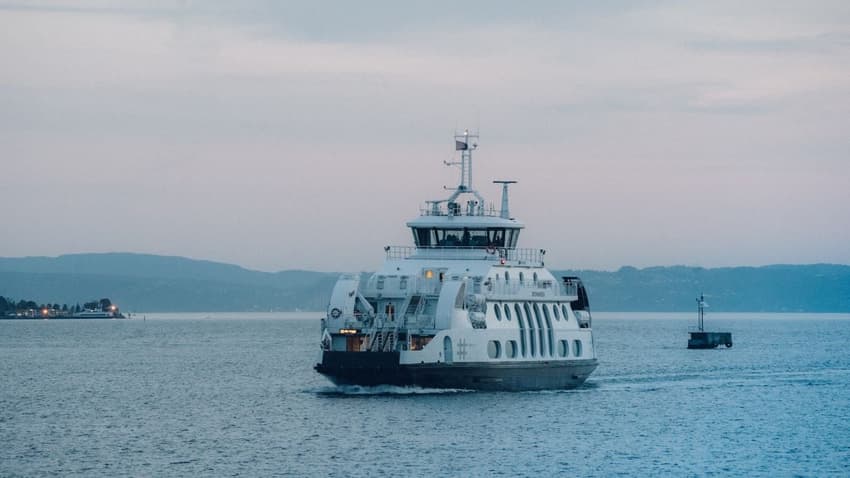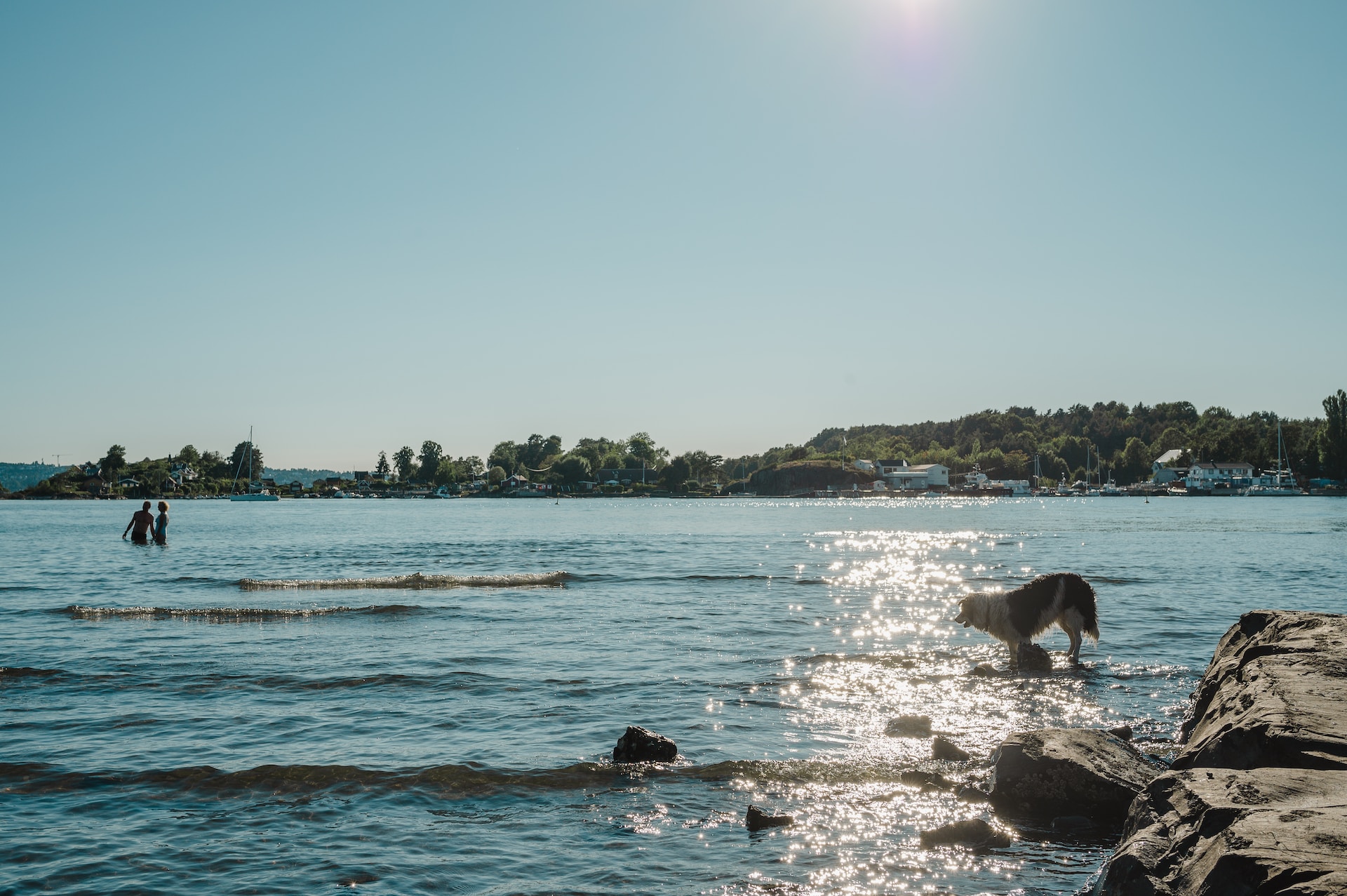What you need to know about island hopping in Oslo

The islands dotted around the inner Oslofjord have seen an explosion in popularity this summer. If you fancy heading out to take in some of the picturesque scenery just outside Oslo, there are a few things you should know.
Ruter, which operates public transport in Oslo, says it has seen a 68 percent increase in the number of people taking its ferries this summer, a record for the company.
In June, more than 301,000 trips were made using the ferries. It shouldn’t come as any surprise that the islands have proven extremely popular as the ferries are relatively cheap, and there is plenty to see and do.
The ferries are part of the public transport network
Ruter is responsible for operating public transport in Oslo, and it has a fleet of electric ferries which can seat up to 350 passengers.
The ferries can be taken from Aker Brygge in central Oslo. Aker Brygge is a short walk from Oslo City Hall.
The easiest way to buy a ticket is with the Ruter app. A single ticket costs 39 kroner. The islands all come under zone 1. If you have a 24-hour pass or month pass for Zone 1, you can also travel to the islands.
READ MORE: How tourists in Oslo can save money and live like a local
Up to four children will be able to travel for free with an adult with a valid ticket until August 21st. This offer applies to both locals and tourists.
There are also several boats which offer sightseeing cruises of the Oslofjord. These trips are more expensive than the public transport ferries but typically take you further out into the fjord. If you wish to see the islands on foot, taking the Ruter ferries is the best option.
What you need to know about the ferry journey
Two routes go to the islands: the B1 (which runs all year) and the summer season B2.
The B1 stops at Hovedøya, Lindøya øst, Gressholmen, Bleikøya, Nakkholmen, Lindøya vest and Hovedøya again before arriving back into Aker Brygge.
Meanwhile, the B2 stops at Hovedøya, Gressholmen, and Langøyene. Between May and early September, there are regular departures of the B1 and B2.
There is a ferry leaving roughly every 30 minutes.
There is outside seating so you can take in the surroundings, and much more seating indoors. The full B1 journey from Aker Brygge back to port takes approximately 54 minutes. The B2 to Langøyene takes 26 minutes.
You don’t have to get off at a specific stop, and if you want to see the inner Oslo fjord, you can just ride the ferry from its start destination to its end destination.
What to do on the islands
There is pretty much something for everyone on all the islands. Hovedøya is the island close to Aker Brygge (an eight-minute journey). It has two beaches and an area in the middle of the island for playing football and other outdoor sports.
There is also the ruins of the Cistercian Order monastery from 1147. Two large cannon emplacements from 1808 are also found on the island.
The island has small snacks from the Klosterkroa café or a more substantial meal from the Revierhavnen Kro restaurant. Staying overnight and lighting the campfire outside of the allowed areas is strictly prohibited.
One island that does allow camping is Langøyene, which also has an excellent beach of its own in addition to football and volleyball pitches.
The east side of Gressholmen has decent swimming, but other spots can be quite rocky and with barnacles. Gressholmen Kro serves fantastic seafood and craft beer, and the Heggholmen lighthouse is stunning.

There are plenty of places to go swimming off of Oslo's islands. Photo by Kamil Klyta on Unsplash
Lindøya is home to plenty of picturesque and charming island cabins, and there are two small beaches with jetties on the southwest of the island. There is also a swimming stadium still used for competitions today. You can also see Oslo’s meridian monument, which facilitated an exact calculation of the city’s eastern longitude.
Bleikøya and Nakholmen are mainly home to those who own summer cabins there, and some facilities are closed to tourists and are only accessible for those who own a property on the island.
You don’t just have to go to the islands
Ruter has a number of other ferry routes which go on longer journeys. You can take ferries from Aker Brygge to Slemmestad, Nesodden and Drøbak.
Drøbak is a charming summer town that is 90 minutes away on the ferry. You can also stop at Oscarborg Fortress.
These trips are outside zone 1 so you will need a different kind of ticket which costs more. However, these ferries go further out into the Oslofjord.
Comments
See Also
Ruter, which operates public transport in Oslo, says it has seen a 68 percent increase in the number of people taking its ferries this summer, a record for the company.
In June, more than 301,000 trips were made using the ferries. It shouldn’t come as any surprise that the islands have proven extremely popular as the ferries are relatively cheap, and there is plenty to see and do.
The ferries are part of the public transport network
Ruter is responsible for operating public transport in Oslo, and it has a fleet of electric ferries which can seat up to 350 passengers.
The ferries can be taken from Aker Brygge in central Oslo. Aker Brygge is a short walk from Oslo City Hall.
The easiest way to buy a ticket is with the Ruter app. A single ticket costs 39 kroner. The islands all come under zone 1. If you have a 24-hour pass or month pass for Zone 1, you can also travel to the islands.
READ MORE: How tourists in Oslo can save money and live like a local
Up to four children will be able to travel for free with an adult with a valid ticket until August 21st. This offer applies to both locals and tourists.
There are also several boats which offer sightseeing cruises of the Oslofjord. These trips are more expensive than the public transport ferries but typically take you further out into the fjord. If you wish to see the islands on foot, taking the Ruter ferries is the best option.
What you need to know about the ferry journey
Two routes go to the islands: the B1 (which runs all year) and the summer season B2.
The B1 stops at Hovedøya, Lindøya øst, Gressholmen, Bleikøya, Nakkholmen, Lindøya vest and Hovedøya again before arriving back into Aker Brygge.
Meanwhile, the B2 stops at Hovedøya, Gressholmen, and Langøyene. Between May and early September, there are regular departures of the B1 and B2.
There is a ferry leaving roughly every 30 minutes.
There is outside seating so you can take in the surroundings, and much more seating indoors. The full B1 journey from Aker Brygge back to port takes approximately 54 minutes. The B2 to Langøyene takes 26 minutes.
You don’t have to get off at a specific stop, and if you want to see the inner Oslo fjord, you can just ride the ferry from its start destination to its end destination.
What to do on the islands
There is pretty much something for everyone on all the islands. Hovedøya is the island close to Aker Brygge (an eight-minute journey). It has two beaches and an area in the middle of the island for playing football and other outdoor sports.
There is also the ruins of the Cistercian Order monastery from 1147. Two large cannon emplacements from 1808 are also found on the island.
The island has small snacks from the Klosterkroa café or a more substantial meal from the Revierhavnen Kro restaurant. Staying overnight and lighting the campfire outside of the allowed areas is strictly prohibited.
One island that does allow camping is Langøyene, which also has an excellent beach of its own in addition to football and volleyball pitches.
The east side of Gressholmen has decent swimming, but other spots can be quite rocky and with barnacles. Gressholmen Kro serves fantastic seafood and craft beer, and the Heggholmen lighthouse is stunning.

Lindøya is home to plenty of picturesque and charming island cabins, and there are two small beaches with jetties on the southwest of the island. There is also a swimming stadium still used for competitions today. You can also see Oslo’s meridian monument, which facilitated an exact calculation of the city’s eastern longitude.
Bleikøya and Nakholmen are mainly home to those who own summer cabins there, and some facilities are closed to tourists and are only accessible for those who own a property on the island.
You don’t just have to go to the islands
Ruter has a number of other ferry routes which go on longer journeys. You can take ferries from Aker Brygge to Slemmestad, Nesodden and Drøbak.
Drøbak is a charming summer town that is 90 minutes away on the ferry. You can also stop at Oscarborg Fortress.
These trips are outside zone 1 so you will need a different kind of ticket which costs more. However, these ferries go further out into the Oslofjord.
Join the conversation in our comments section below. Share your own views and experience and if you have a question or suggestion for our journalists then email us at [email protected].
Please keep comments civil, constructive and on topic – and make sure to read our terms of use before getting involved.
Please log in here to leave a comment.